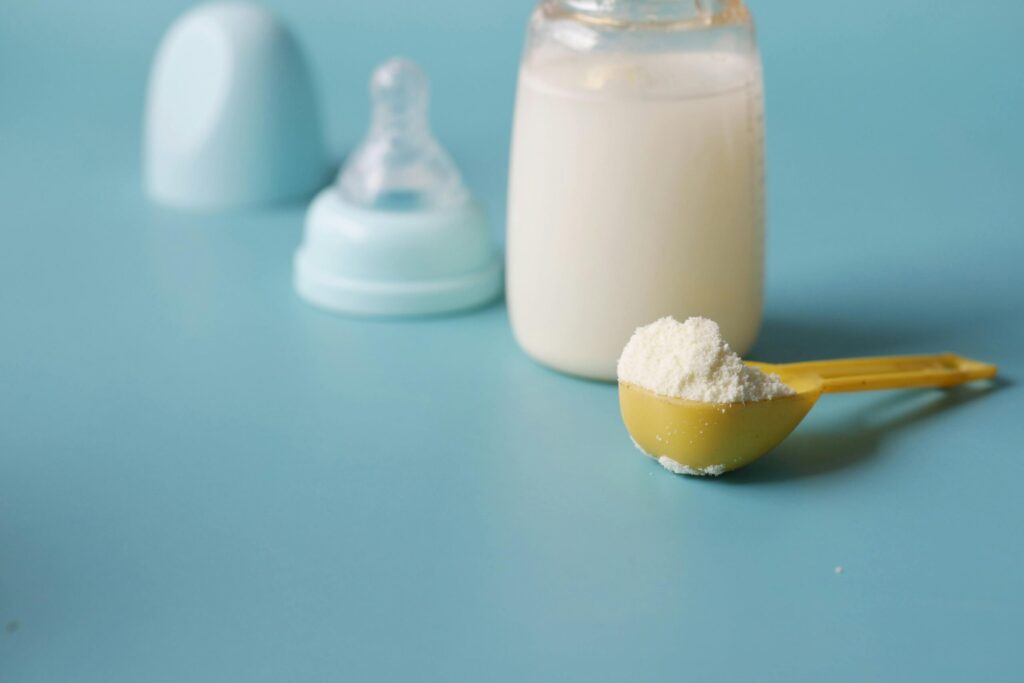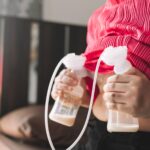Welcoming a new baby into your life comes with countless decisions, and how you’ll feed your little one is among the most important. As a mother of five children and a midwife with over two decades of experience, I’ve supported thousands of families through their feeding journeys—including many who chose safe formula feeding for their infants. Whether formula is your first choice, part of a combination feeding approach, or became necessary after other plans changed, understanding the basics will help you feel confident in nourishing your baby.
I remember when my third child struggled with nursing due to a tongue tie and weight loss concerns. During those tearful days while we worked through solutions, formula became our lifeline—ensuring my baby received the nutrition he needed while we addressed breastfeeding challenges. That experience deepened my compassion for families navigating feeding decisions and reinforced that healthy babies can thrive with various feeding methods when done properly.
Choosing the Right Formula for Your Baby
With so many options lining store shelves, selecting a formula can feel overwhelming. Let’s break down what you need to know to make an informed choice.
Understanding Formula Types
All infant formulas must meet strict nutritional standards, but they differ in their base ingredients and processing:
- Cow’s milk-based formulas: The most common type, these formulas use cow’s milk protein that’s been altered to be more digestible for infants. They contain lactose as the primary carbohydrate, similar to breast milk.
- Soy-based formulas: Free from milk protein, these formulas use soy protein and are typically lactose-free. They’re often chosen for babies with milk protein allergies or families following vegetarian diets.
- Specialized formulas: These include:
- Hypoallergenic (extensively hydrolyzed) formulas with proteins broken down for easier digestion
- Amino acid-based formulas for severe allergies
- Premature formulas with extra calories and nutrients
- Formulas for specific medical conditions
- Organic formulas: These use ingredients grown without pesticides or antibiotics and may appeal to families concerned about chemical exposure.
According to the American Academy of Pediatrics, standard cow’s milk-based formulas are appropriate for most infants, while specialized formulas should be used when medically indicated.
How to Select What’s Best for Your Baby
Consider these factors when making your selection:
- Your baby’s specific needs: Has your pediatrician recommended a specialized formula? Does your baby have known allergies or intolerances?
- Digestibility concerns: If your baby seems uncomfortable after feeding (excessive gas, fussiness, or unusual stool patterns), they might benefit from a different formula type.
- Form of formula: Powder (most economical), liquid concentrate (middle price range), or ready-to-feed (most expensive but most convenient).
- Budget considerations: Formula costs vary significantly, especially between standard and specialized options.
- Availability: Consider whether your chosen formula is reliably available where you shop.
One client I worked with tried four different formulas before finding one that didn’t cause her baby to spit up excessively. “I felt like I was failing him,” she confided. I reminded her that finding the right fit is part of the journey—not a reflection of her parenting. Within days of the switch, her baby was content after feedings, and her confidence blossomed.
Essential Equipment for Safe Formula Feeding
Before preparing your first bottle, gather these supplies:
- Bottles: Start with a few different styles to see what your baby prefers. Many babies have definite opinions about bottle nipples!
- Nipples: Available in various flow rates (preemie, newborn, older infant) and shapes (traditional, orthodontic, anti-colic).
- Bottle brush: For thorough cleaning of bottles and nipples.
- Sterilizing equipment: Depending on your water quality and baby’s health, you might need a sterilizer or pot for boiling.
- Formula measuring tools: Most powdered formula comes with a scoop, but you might want a formula pitcher for mixing larger batches.
- Water source: If your tap water is unsafe or highly mineralized, you’ll need filtered or bottled water suitable for infants.
- Insulated carrier: For transporting prepared formula when you’re out and about.
When my daughter was bottle-feeding her twins, she discovered that having a dedicated formula station—with all supplies organized in one area—made middle-of-the-night feedings much more manageable. Sometimes these simple organizational strategies make all the difference during exhausting newborn days.
The Complete Guide to Formula Preparation
Proper preparation is crucial for safe formula feeding. Let’s walk through the process step by step.
Safety First: Cleanliness and Sterilization
Before handling formula or equipment:
- Wash your hands thoroughly: Spend at least 20 seconds with soap and warm water.
- Clean work surfaces: Ensure the area where you’ll prepare formula is clean.
- Sterilize new equipment: Before first use, sterilize all bottles, nipples, and preparation tools by:
- Boiling for 5 minutes in water
- Using a microwave or electric sterilizer
- Running through a dishwasher with hot water and heated drying cycle
- Ongoing cleaning: After the initial sterilization, thorough washing with hot, soapy water and a dedicated bottle brush is sufficient for most healthy, full-term babies. Continue sterilizing for premature or immunocompromised infants.
I’ll never forget one father who came to me panicking because his baby had developed persistent diarrhea. When we reviewed his bottle cleaning routine, we discovered he was simply rinsing bottles between uses. Once he began properly washing equipment, his baby’s digestive issues resolved within days—a powerful reminder that these seemingly simple steps matter tremendously.
Perfect Preparation: Step-by-Step Instructions
For powdered formula (most common type):
- Check the expiration date on your formula container.
- Prepare water: If using tap water, let cold water run for 30 seconds before collecting. Bring water to a rolling boil for 1 minute to kill potential bacteria. Allow it to cool until it’s warm (70°C/158°F is ideal—hot enough to kill bacteria in powder but not so hot it destroys nutrients).
- Measure water first: Pour the correct amount of water into the bottle.
- Add the exact amount of formula powder: Use the scoop provided, leveling each scoop with a clean knife or the leveling tool on the container.
- Attach nipple and cap: Secure tightly.
- Mix thoroughly: Shake or swirl gently until all powder dissolves.
- Test temperature: Apply a few drops to your inner wrist to ensure it’s comfortably warm, not hot.
For ready-to-feed formula:
- Wash can top before opening.
- Pour directly into a clean bottle.
- Attach nipple and cap.
- Warm if desired (though room temperature is perfectly acceptable).
The Centers for Disease Control and Prevention recommends using prepared formula within 2 hours or refrigerating immediately and using within 24 hours.
Smart Storage for Safety
Proper storage ensures safe formula feeding and prevents waste:
- Unopened containers: Store in a cool, dry place. Liquid formula shouldn’t freeze.
- Opened powder: Keep covered in a cool, dry place and use within one month.
- Prepared bottles: Refrigerate immediately if not feeding right away. Use within 24 hours.
- During feeding: Use formula within 1 hour of when baby begins feeding. Discard any remainder—never save for later.
- Travel considerations: Transport prepared formula in a cooler with ice packs if it will be more than 2 hours before feeding.
One creative solution I shared with a client who traveled frequently: pre-measure powder into bottles and carry water separately. Mix only when ready to feed to eliminate concerns about temperature control during transport.
Feeding Your Baby: Techniques and Schedules
The art of safe formula feeding extends beyond preparation to the feeding experience itself.

Feeding Positions That Work
How you hold your baby during feedings matters:
- Semi-upright position: Hold baby at approximately a 45-degree angle to prevent ear infections and choking.
- Support head and neck: Cradle baby’s head in the crook of your arm or hand.
- Hold bottle properly: Ensure the nipple is always full of formula, not air. Tilt bottle as needed.
- Consider paced feeding: This technique mimics breastfeeding’s rhythm by holding the bottle horizontally, allowing baby to control flow and take breaks.
- Switch sides: Alternate which arm you use to hold baby during feedings to promote equal muscle development and bonding.
When supporting a new mother with twins, I showed her how to use pillows strategically to bottle-feed both babies simultaneously while maintaining proper positioning. “This makes me feel like I have superpowers,” she laughed—a beautiful moment of confidence emerging amid the chaos of newborn twins.
Understanding How Much and How Often
Newborns have tiny tummies, so frequent, smaller feedings are normal:
- Newborns (0-1 month): 1-3 ounces every 2-3 hours, 8-12 feedings in 24 hours
- 1-3 months: 4-5 ounces every 3-4 hours, 6-8 feedings in 24 hours
- 3-6 months: 6-7 ounces every 4-5 hours, 5-6 feedings in 24 hours
- 6-12 months: 7-8 ounces 4-5 times daily, with solid foods gradually increasing
These are general guidelines—your baby may need more or less. Always follow your baby’s hunger cues rather than forcing them to finish a bottle.
Reading Your Baby’s Feeding Cues
Responsive feeding means watching for signs your baby is hungry or full:
Hunger signs:
- Rooting (turning head searching for nipple)
- Hand-to-mouth movements
- Lip smacking or sucking motions
- Fussing or early crying (crying is a late hunger sign)
Fullness signs:
- Slowing or stopping sucking
- Turning away from the bottle
- Extending or relaxing arms and legs
- Falling asleep
One father I worked with was concerned his baby wasn’t getting enough formula because she consistently took less than the “recommended” amount. When we tracked her weight gain (perfect) and wet diapers (plentiful), he was relieved to discover his baby simply had a smaller appetite. “She knows what she needs better than any chart does,” I reminded him.
Troubleshooting Common Formula Feeding Challenges
Even with perfect preparation, challenges can arise. Here are solutions to common concerns:
Addressing Digestive Discomfort
If your baby seems uncomfortable after feeds:
- Check nipple flow: Too fast and baby may gulp air; too slow and they may swallow air from frustration.
- Burp more frequently: Try burping mid-feed and after feeding.
- Consider anti-colic bottles: These designs minimize air intake.
- Evaluate formula type: Some babies do better with partially hydrolyzed proteins or formulas designed for sensitive tummies.
- Hold upright after feeds: Keeping baby vertical for 15-30 minutes after feeding can reduce reflux symptoms.
I remember one exhausted mother who came to me because her baby cried after every feeding. We discovered her bottle nipple flow was too fast for her tiny preemie. After switching to a slower-flow preemie nipple, her baby’s feeding experience transformed from distressing to peaceful.
When to Consider Changing Formula
Signs your baby might benefit from a formula change include:
- Excessive spitting up beyond normal newborn reflux
- Extreme fussiness during or after feedings
- Unusual stool patterns like constipation or diarrhea
- Skin rashes that might indicate allergic reaction
- Poor weight gain despite adequate intake
Always consult your pediatrician before switching formulas—sometimes symptoms have other causes, and frequent changes can further upset sensitive digestive systems.
Combining Formula with Breast Milk
Many families practice combination feeding. If you’re supplementing breastfeeding with formula:
- Offer breast first if maintaining milk supply is important.
- Consider pumping when baby takes formula to maintain supply.
- Use the smallest supplement needed to meet baby’s needs.
- Be consistent with formula type to minimize digestive adjustments.
“I felt like I was failing at both breastfeeding and formula feeding,” one mother confided after her return to work necessitated combination feeding. We reframed her perspective: “You’re succeeding at responsive feeding—meeting your baby’s needs while balancing your own.” Months later, she shared how that shift in thinking had liberated her from unnecessary guilt.
Special Considerations for Formula Feeding
Some situations require additional attention for safe formula feeding:
Premature or Low Birth Weight Babies
These vulnerable infants may need:
- Specialized formula with higher calorie content
- More frequent feedings in smaller amounts
- More vigilant sterilization of feeding equipment
- Careful monitoring of weight gain and output
Formula Feeding While Traveling
Maintaining safe formula feeding away from home requires planning:
- Research water safety at your destination
- Pack extra supplies in case of delays
- Know how to sterilize in different environments
- Consider ready-to-feed options for maximum convenience
When traveling internationally with my youngest, I learned to pack a collapsible silicone kettle for boiling water in hotel rooms—a game-changer for ensuring safe preparation anywhere.
The Emotional Side of Formula Feeding
The practical aspects of safe formula feeding are important, but so is nurturing your emotional well-being:
- Release any guilt: Whether formula is your first choice or became necessary unexpectedly, your baby can thrive with formula.
- Create bonding opportunities: Skin-to-skin contact, eye gazing, and gentle speaking during feedings create meaningful connection.
- Involve partners: Formula feeding allows partners to share equally in the feeding relationship.
- Trust your instincts: You know your baby better than any book or website.
One beautiful memory from my practice involves a mother who had initially struggled with feelings of failure when breastfeeding didn’t work out. Months later, she shared a photo of her thriving baby with the message: “I realized my worth as a mother isn’t measured in ounces of breast milk but in ounces of love.”
Final Thoughts on Formula Feeding
Whether formula is your primary feeding method or part of a broader approach, understanding and implementing safe formula feeding practices ensures your baby receives optimal nutrition in a loving environment. Remember that babies thrive not just on perfect nutrition but on the consistent, loving care their parents provide.
From my two decades as a midwife and my journey raising five children, I’ve learned that feeding with knowledge, attention, and love matters more than which specific method you choose. Your baby doesn’t need perfection—they need you, responding to their needs with care and confidence.
If you remember nothing else, remember this: the best feeding choice is the one that keeps your baby nourished and allows your family to thrive. Trust yourself, seek support when needed, and cherish these feeding moments that pass all too quickly.



